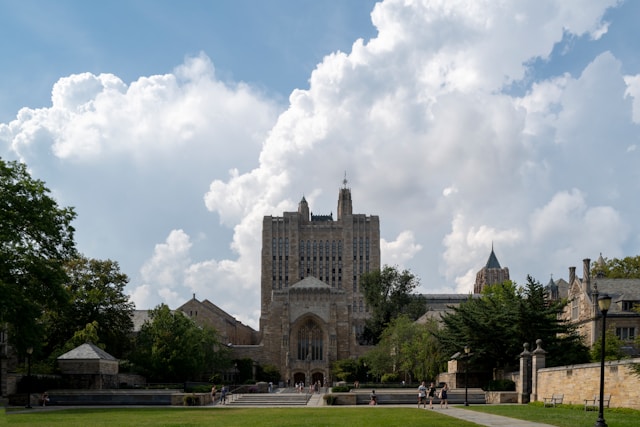Tucked away at the crossroads of CT Route 32 and US Route 44 in Storrs, Connecticut lies a haunting piece of history: the Mansfield Training School and Hospital. This historic institution operated from 1860 to 1993, serving as a state school for people with developmental disabilities in Connecticut. Now part of UConn’s Depot Campus, the 350-acre property contains numerous abandoned buildings that stand as silent witnesses to changing attitudes toward mental disability care.
What makes this location particularly intriguing is how it captures a complete chapter of American social history. The facility began during an era when institutionalization was the primary approach to supporting those with developmental disabilities. Over its 133-year history, the Mansfield Training School evolved alongside shifting medical practices and social perspectives. Today, these abandoned structures have been left to deteriorate, creating an eerily quiet atmosphere that contrasts sharply with UConn’s bustling main campus.
Get a discount of 15% to 70% on accommodation in Connecticut! Look for deals here:
Connecticut Hotels, Apartments, B&Bs
The Mansfield Training School’s legacy extends beyond its physical remains. When it finally closed, then-superintendent Roger D. MacNamara wrote an op-ed titled “The Mansfield Training School Is Closed: The Swamp Has Been Finally Drained,” reflecting the complicated attitudes surrounding the institution’s history. The site is now recognized on the National Register of Historic Places, and visitors can experience this strangely quiet corner of Storrs that holds powerful stories about how society has treated its most vulnerable citizens.
Evolution and Significance
The Mansfield Training School underwent remarkable transformations throughout its history, reflecting changing attitudes toward developmental disabilities and institutional care. Its legacy continues to impact Connecticut’s approach to caring for vulnerable populations.
Origin and Early Years
The institution began as the Connecticut School for Imbeciles in the late 19th century. In 1915, it was renamed the Connecticut Training School for the Feeble-Minded, reflecting the terminology of that era. By 1917, it merged with the Connecticut Colony for Epileptics to form the Mansfield State Training School and Hospital, becoming the state’s largest mental health institution.
The campus expanded across 350 acres at the junction of Connecticut Route 32 and US Route 44. Early buildings featured distinctive architectural styles of the early 1900s, which later contributed to their historical significance.
The facility initially aimed to provide education, training, and medical care for people with developmental disabilities who were otherwise marginalized by society.
Expansion and Challenges
As the institution grew, it faced significant operational challenges. The mid-20th century brought increased scrutiny to conditions at such facilities nationwide. Overcrowding became a serious issue as more residents were admitted than the facilities could properly accommodate.
Aging infrastructure introduced health hazards including lead paint and asbestos. Knight Hospital, one of the prominent buildings on campus, exemplified both the ambitions and limitations of institutional care during this period.
Funding shortages plagued the institution, affecting staff levels and quality of care. Medical and educational approaches evolved, but the facility struggled to implement modern practices due to budget constraints and outdated facilities.
By the 1970s, changing perspectives on institutional care led to increased advocacy for community-based alternatives like group homes, beginning the shift away from large institutions.
Closure and Aftermath
The Mansfield Training School officially closed in 1993, following years of lawsuits and concerns about patient care. Former superintendent Roger D. MacNamara celebrated this closure in an op-ed, describing it as “draining the swamp.”
The campus was subsequently transferred to the University of Connecticut, becoming known as the Depot Campus. This transition preserved many historic structures while repurposing them for educational use.
In 1985, the site was entered into the State Register of Historic Places due to the architectural significance of its early 20th century buildings. This designation created both preservation opportunities and renovation challenges.
Today, visitors can explore this historic district and reflect on its complex legacy. Some buildings remain abandoned, sparking local legends of paranormal activity, while others have been renovated for new purposes.
Current State and Impact
The Mansfield Training School has undergone significant transformation since its closure in 1993, with many buildings finding new purposes while preserving their historical significance. The campus now serves as an important educational and research asset for the University of Connecticut while maintaining connections to its complex past.
Adaptive Reuse and Preservation
The former Mansfield Training School, now known as UConn’s Depot Campus, spans an impressive 350 acres at the junction of Connecticut Route 32 and US Route 44. This area gained recognition as a Historic District on the National Register of Historic Places, acknowledging the architectural and historical significance of its early 1900s buildings.
The University of Connecticut acquired the property in 1993, creating both opportunities and challenges. Many structures have been repurposed for university functions, including research facilities and administrative offices. Some buildings temporarily housed the Bergin Correctional Institution before its closure.
Preservation efforts continue to balance modern needs with historical integrity. The distinctive brick architecture and campus layout remain largely intact, offering visitors a glimpse into institutional design from a different era.
Legacy and Educational Contributions
The Mansfield Training School’s legacy lives on through the Mansfield Training School Memorial and Museum project. This initiative explores the institution’s 133-year history while examining its relationship with UConn. The project serves as both memorial and educational resource, helping today’s students understand past approaches to developmental disabilities.
UConn researchers and the Mansfield Historical Society collaborate to document and interpret the site’s complex past. Archives containing institutional records, photographs, and personal accounts provide valuable materials for academic study in fields ranging from medical ethics to social history.
Educational programs at the campus highlight changing attitudes toward disability care. The transition from institutional to community-based support represents an important chapter in Connecticut’s social history that continues to inform current practices.
Get a discount of 15% to 70% on accommodation in Connecticut! Look for deals here:
Connecticut Hotels, Apartments, B&Bs








